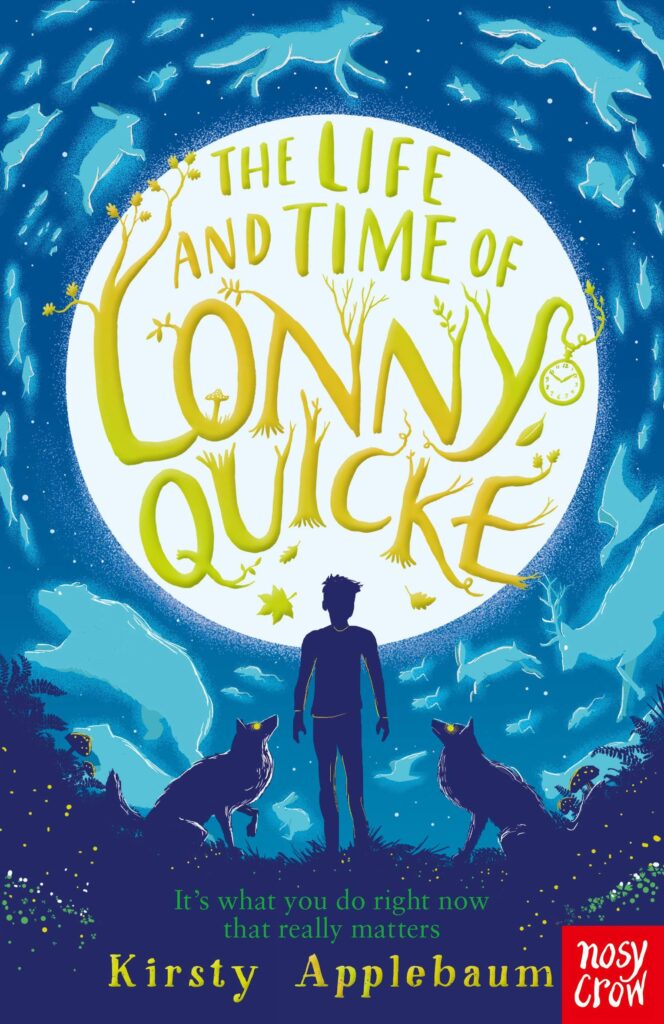By Kirsty Applebaum (published by Nosy Crow, 2021)
But it was only a rabbit. It’ll shorten a few days from me, a week at the most. Talents like this don’t come free, you know. There’s always a price.
Give a bit of life, lose a bit of life.
That’s how it goes.
No, that isn’t a typo in the book’s title; it’s a clever play on a well-known phrase. Because Lonny Quicke is special. Lonny is a lifeling – a being who can bring things back from the brink of death, at the cost of some of his own life.
But Lonny is also only a twelve-year-old boy, who has spent his life isolated in the forest for his own protection. The family is struggling however, and Lonny’s desire to help leads him into the city of Farstoke.
Longing for adventure, and drawn in by the possibility of learning about his deceased mother, Lonny ignores his brother’s fear of discovery and decides to enjoy himself. What’s there to be afraid of?
After all, Farstoke loves a lifeling…

I want to start by saying that I find the premise of the book utterly intriguing. We’ve seen things before where people age rapidly, or give their life’s energy for others, but never to my knowledge where it’s done gradually, bit by bit, and where the protagonist is a child.
Lonny has the power to prevent things from dying – it’s not just a power though, it’s almost an inexorable pull. When something is dying nearby, he hears a buzzing. It gets louder and louder, a building pressure that vibrates inside his head until the creature either dies or he saves it. Saving it costs him his own life however; the bigger the creature, the more saving it ages him.
All this is made clear to the reader from the outset so that we can immediately appreciate how high the stakes are, and the fear that Lonny’s dad Eddie especially feels for Lonny’s safety. Early on in the book, we see a situation where his father has to physically remove him to stop him from using up his life to save things – despite the fact that the resulting deaths will cause the family to struggle.
Eddie is not a lifeling, but he will do everything he can to protect his son, even if it makes life difficult for them as a family. Unfortunately, this brings its own problems, as you can probably imagine. As most parents will know, forbidding something just makes it more tantalising, and refusing to talk about certain topics – such as the childrens’ dead mother – will only leave a child desperate for answers.
Each character has their flaws, and it would be easy to cast blame: Lonny should be calmer and more careful, Eddie should be more open and forthcoming, Midge should be less of a blabbermouth. Could things have been resolved if everyone was more communicative and patient? Maybe. But Applebaum writes them all in such a sympathetic way that, even if we feel annoyed or frustrated with their actions, we can understand exactly where they’re coming from.
The characters in Farspoke are similar in that sense, and it’s fascinating to see the city through Lonny and Midge’s eyes. The annual festival, where the city gates are closed for 24 hours, almost feels like something out of a cult. Reading it, I found myself torn between being creeped out like Midge, and just floating along with it like Lonny.
This feeling escalates somewhat when you read the lifeling tales. Twice we are told tales from Granny Quicke, and twice we are told the ‘same’ story by the Farspokers. Without spoiling them, it’s safe to say that they have some significant differences!
I thoroughly enjoyed Applebaum’s descriptions of how the townsfolk view lifelings; it reminded me of classic folklore, like how our folktales talk about fairies or pixies. Lifelings are described as tiny and willowy, and you can practically imagine them being illustrated by Arthur Rackham or similar. This familiarity lends a sense of realism to the story, the idea that you could stumble upon a place with these tales and traditions.
Hopefully I’ve given you enough glimpses into the story to whet your appetite without giving too much away. The story is both delightful and surprisingly tense, even scary at one point, but also prompts the reader to consider the value of life, and what it means to different people in different situations.
Some of the themes might feel a bit grim for younger readers, but for older readers it could definitely lead to productive discussions about communication and boundaries, as well as the importance of re-evaluating opinions when presented with new information.
If you like the sound of The Life and Time of Lonny Quicke, you can grab a copy at the link below.
(Disclosure: If you buy books linked to our site, we may earn a commission from Bookshop.org, whose fees support independent bookshops.)
Looking for more fantasy tales to read? If so, you can check out some of our previous fantastical reviews here.

